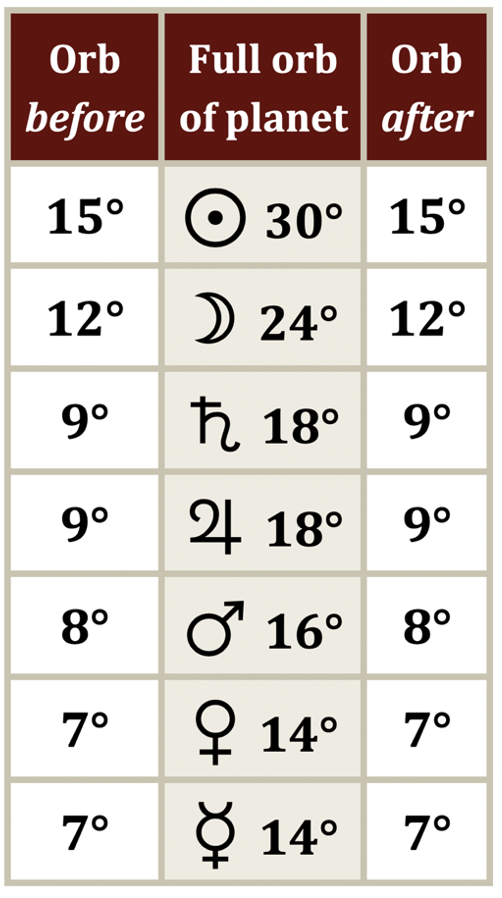Occident/orient‘Occident’ is from the Latin term for the west, originally
meaning ‘falling’, ‘setting’ or ‘perishing’ (as in sunset); ‘orient’ is from
the Latin term for the east, originally from oriens meaning ‘rising’ or ‘emerging’, (as in sunrise). |
Occidental hemisphereThe western/setting hemisphere, incorporating the 4th,
5th, 6th, 7th, 8th, and 9th houses. |
Occidental quarterThe quadrant of the chart that falls beneath the
western horizon, incorporating the 4th, 5th and 6th houses. Also known as the
phlegmatic quarter |
Occidental/orientalWith regards to the houses or the angles, occidental means ‘western’ and oriental means ‘eastern’. Also, if a planet is described as ‘oriental in the figure’, it means that it is located near the ascendant which is the eastern angle, whilst ‘occidental in the figure’, means that it is located near the descendant which is the western angle. When applied to planets or stars however, occidental means ‘setting into the Sun’ and oriental means ‘rising from the Sun’, relating to the original basis of the terms by which they are associated with the cycles of growth and decay. The usual definition is that an oriental planet is one which rises before the Sun; whereas an occidental planet is one that rises after it. (When the superior planets are thus defined as oriental they are beginning a new solar cycle, having recently emerged in their heliacal rising, and are considered dignified – this is not necessarily the case for Mercury, Venus, and is never the case for the Moon which emerges from the Sun on the left hand side, which is why these planets do not gain dignity by being oriental). |
OrbsAspects s  how an influence in the period leading up to exactness and a diminishing effect as they separate from perfection. The time-span in which their effect may be expected to manifest and linger is defined by the period that they are said to be 'in orb'. how an influence in the period leading up to exactness and a diminishing effect as they separate from perfection. The time-span in which their effect may be expected to manifest and linger is defined by the period that they are said to be 'in orb'.
Traditionally, orbs of influence were applied to planets, not the aspects themselves, with the Sun and Moon recognised as having a greater 'virtue' and orb of influence than the planets. For example, one popular list defines the Sun's orb as 15°; the Moon's orb as 12°, and the orb of Mercury, Venus and Mars as 7°. To know if two planets are 'in orb of application' their orbs are added together and halved - if the planets are separated by less than that distance they are said to be 'in application'. For example, Sun and Moon: Orbs are 15° + 12°; so 27° divided by 2 = 13°30'. Thus, the Sun and Moon are 'in orb' of any aspect when they are less than 13°30' from the point of exactness. |
OrientSee ‘occident/orient’. |
OrientalSee ‘occidental/oriental’. |
Oriental hemisphereThe eastern/rising hemisphere, incorporating the 4th,
3rd, 2nd, 1st, 12th, and 11th houses. |
Oriental quarterThe quadrant of the chart that rises from the eastern
horizon, incorporating the 1st, 12th and 11th houses. Also known as the sanguine
quarter. |